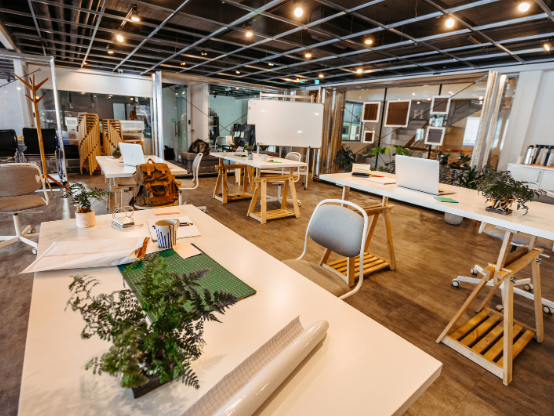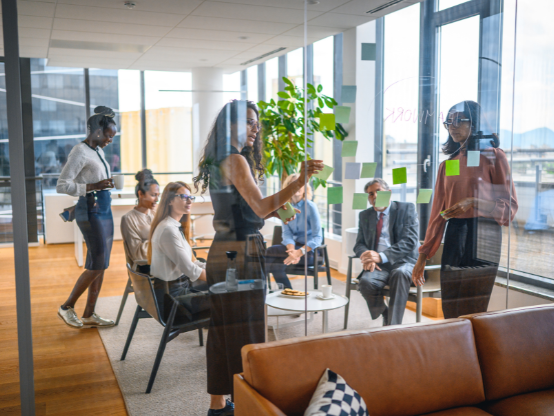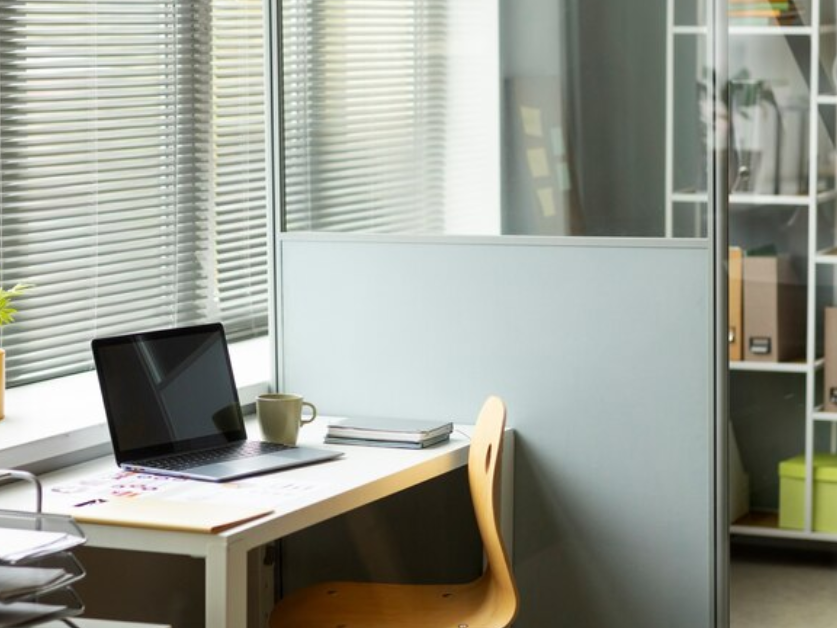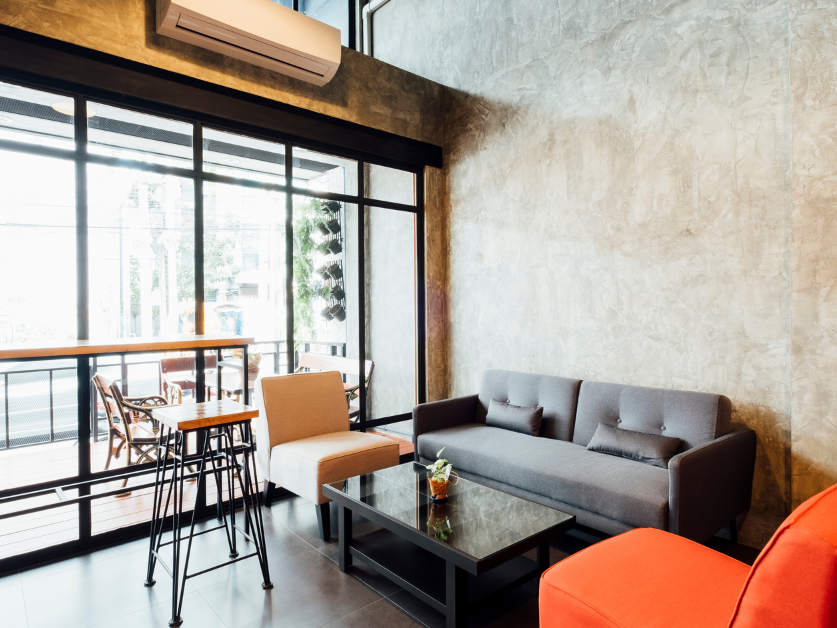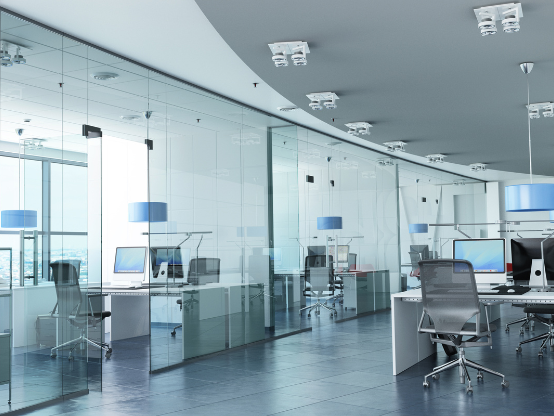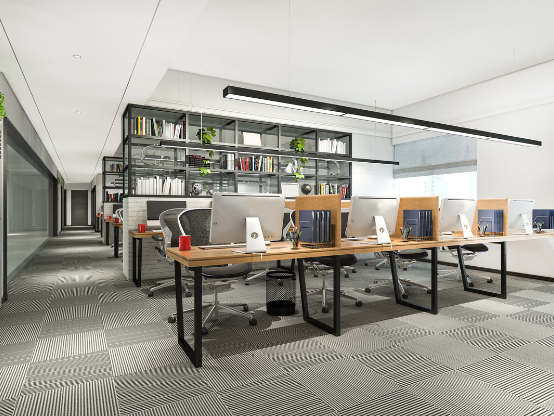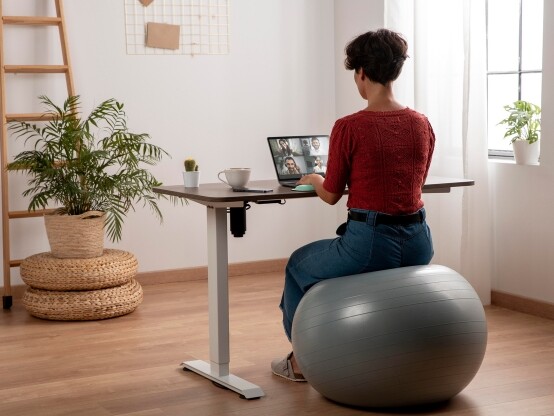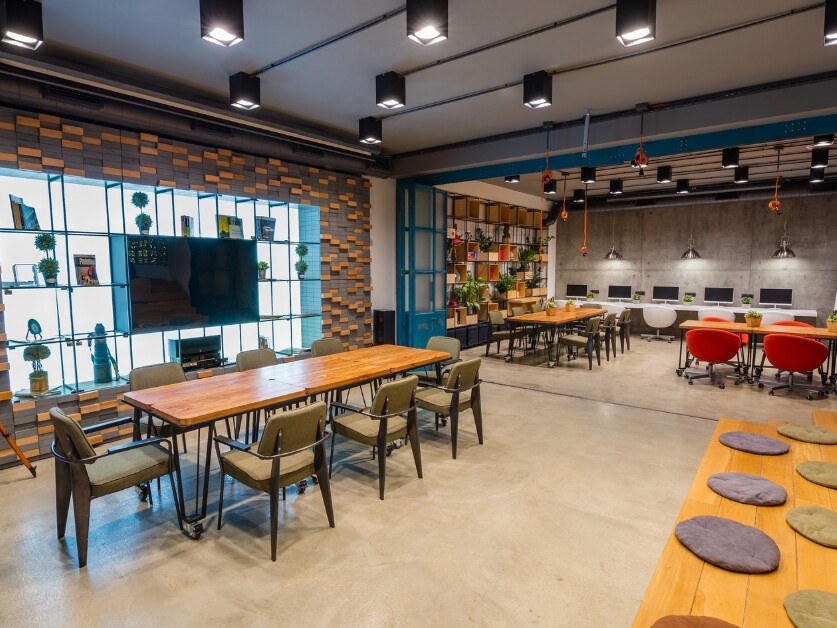We are living through an unprecedented time, and although pandemics have swept through the world before, we haven’t before lived under such an intertwined, global economy. As new developments continue to unfold regarding public health, virus containment, and economic stagnation, we can find solace and inspiration by looking forward to a post-coronavirus world. While this new world is unknown, we are certain that commercial office design will adapt to further promote staff health and safety. Here’s how COVID-19 might affect and influence workplace interiors and practices in the coming years.
Increased Focus on Health and Wellness
Social distancing has taken its toll on many of us, mentally and physically. We are no longer able to go to the gym, socialize with coworkers, or simply continue a long-established daily routine. This certainly affects an organization’s morale, and we are all itching to get back to the norm. As companies initially dealt with employee stress and anxiety surrounding the coronavirus, many tried to strike a balance between pursuing daily work norms while providing resources for employees.
Once we return to work, we can safely assume most commercial offices will place an increased importance on employee health and wellbeing. This may be seen by providing more breakout zones or outside space where staff can go to gain peace of mind, quiet, and relaxation. Offices may want to design lounge areas with comfortable couches, lounge chairs, and plush throws so staff can kick back between times of high stress. The trend to design office spaces more similarly to home environments was already picking up, and now with so many of us working from home, familiar design elements may make their way even more heavily into commercial workspaces.
Automation in Public Spaces
Technology has come a long way in offering automated doors, assembly lines, home appliances, and even vehicles. However, prior to COVID-19, many companies opted out of automated devices due to the cost or inconvenience of implementing them. As we witness the rapid spread of this communicable disease, commercial spaces will absolutely utilize automation where possible.
Think of each item an office worker touches in a matter of a few hours – light switches, door handles, soap dispensers, sink faucets, elevator buttons, and more. If certain workplace elements could be swapped for their automated counterparts, communal contact with public objects would decline sharply. In the event of another outbreak, staff in that office would be more likely to mitigate the spread.
Anti-Bacterial Furnishings
Certain materials, like copper, are naturally antibacterial and antimicrobial. Moreover, designers are working tirelessly to implement fabrics, fixtures, and furnishings that are less likely to host viruses and bacteria on their surfaces. Previously, designers focused on beauty, comfort, and durability of commercial-use textiles and materials, but the focus has recently expanded to promote communal health and wellness through design elements.
Decreased Open-Plan Offices
Startups and other creative companies frequently utilize open-office plans to inspire creativity and fuel collaboration. However, many businesses found that this no-boundaries environment decreased productivity and efficiency. Many open-floorplan offices began utilizing breakout zones or quiet areas where staff could work alone, take private calls, or collaborate in smaller groups. The severity of COVID-19 may further reduce the open-office trend and prompt some businesses to be more flexible with their work-from-home policies.
It’s difficult to predict exactly how coronavirus might impact commercial office design. However, we can speculate that office design as we know it will forever change. Environments Denver is committed to remaining up to date on current design trends and will continue to offer ways to keep our clients and their employees safe and thriving at work. For your office furniture needs, contact us today.
